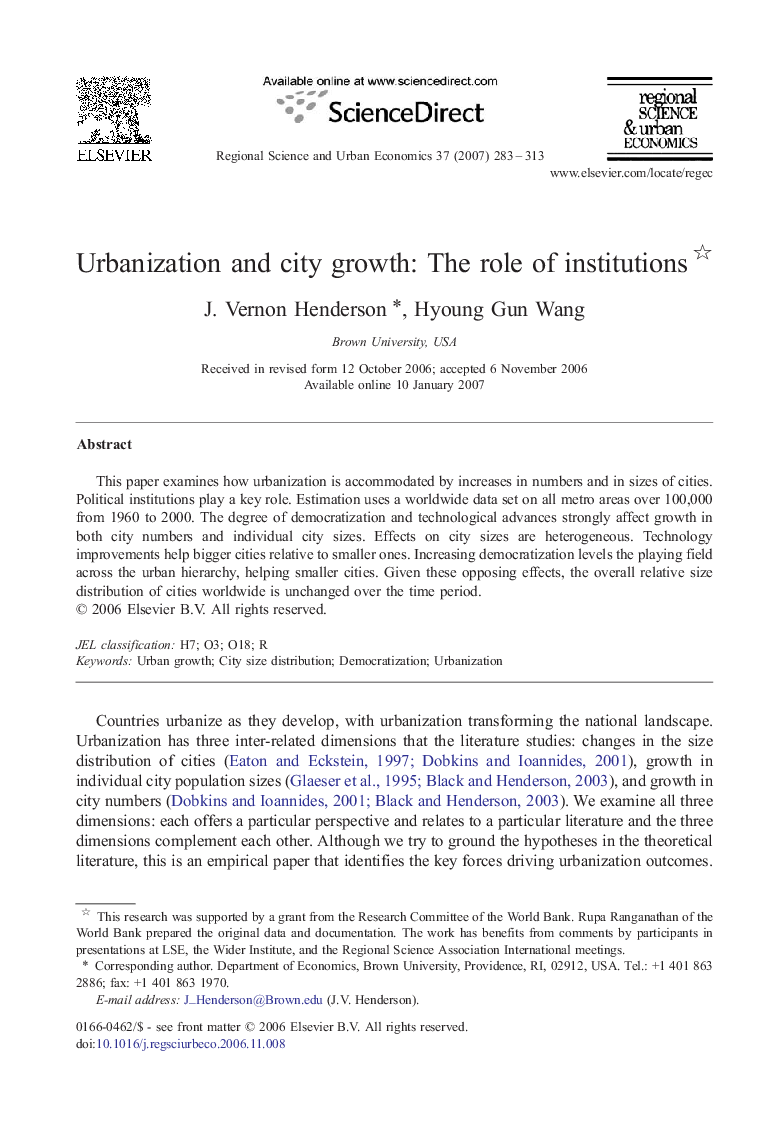| Article ID | Journal | Published Year | Pages | File Type |
|---|---|---|---|---|
| 983978 | Regional Science and Urban Economics | 2007 | 31 Pages |
Abstract
This paper examines how urbanization is accommodated by increases in numbers and in sizes of cities. Political institutions play a key role. Estimation uses a worldwide data set on all metro areas over 100,000 from 1960 to 2000. The degree of democratization and technological advances strongly affect growth in both city numbers and individual city sizes. Effects on city sizes are heterogeneous. Technology improvements help bigger cities relative to smaller ones. Increasing democratization levels the playing field across the urban hierarchy, helping smaller cities. Given these opposing effects, the overall relative size distribution of cities worldwide is unchanged over the time period.
Related Topics
Social Sciences and Humanities
Economics, Econometrics and Finance
Economics and Econometrics
Authors
J. Vernon Henderson, Hyoung Gun Wang,
